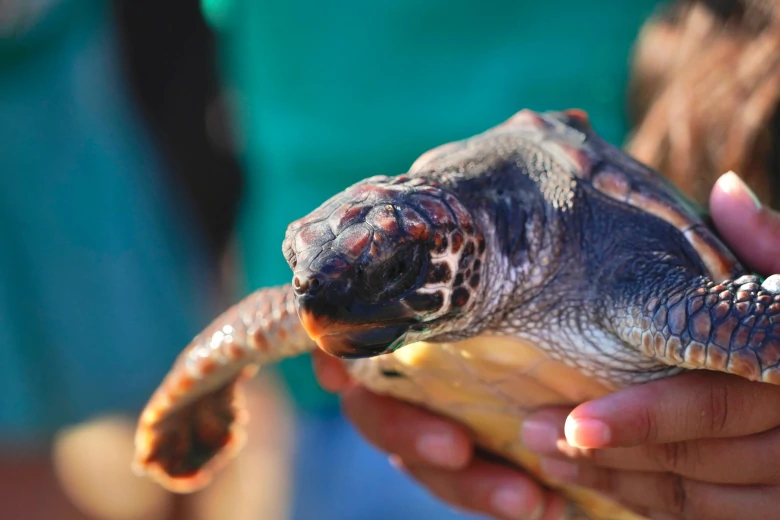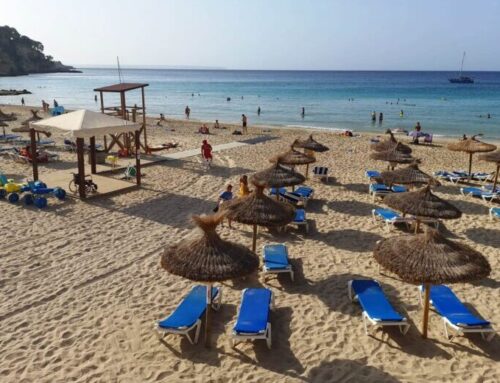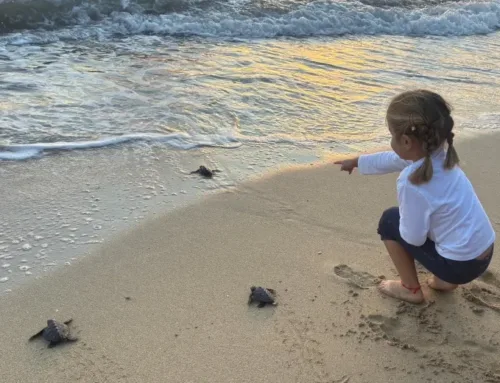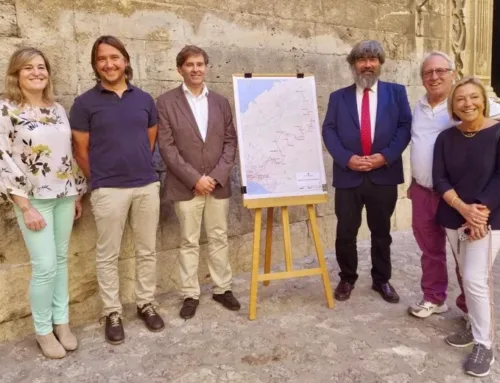The Conselleria de Agricultura, Pesca y Medio Natural has released a total of 68 loggerhead sea turtles (Caretta caretta) into the sea, born during the summer of 2023 in Mallorca. Can Pere Antoni beach in Palma was the site for the release of 23 specimens from the nest detected in the same area on 7th June of the previous year. Simultaneously, 45 turtles were released in Cala Millor, from the nest found on 9th July 2023 on this beach.

Image of the release of loggerhead sea turtles at Can Pere Antoni beach in Palma. Photos: CAIB.
The President of the Govern de les Illes Balears, Margalida Prohens, participated in the release at Can Pere Antoni. She remarked that “as a consequence of climate change, the fact that turtles come to lay eggs on our beaches will become something common, they have come to stay.”
Threatened species
In fact, the loggerhead sea turtle (Caretta caretta), listed as “vulnerable” in the Spanish Catalogue of Threatened Species, typically reproduces in the eastern Mediterranean. It was not until the early 21st century that it began nesting in the western Mediterranean, most likely due to the increase in sea temperature.

Margalida Prohens (second from the left) participated in the turtle release in Palma.
Prohens has emphasized “the importance of protecting the marine and natural environment,” stating that “it will be essential for citizens to be aware of how to act if they encounter a nesting turtle or turtle eggs so that they can follow the same process as those we released into their habitat, which is the sea.”
For more information, you can access this guide published by Mallorca Global Mag, which explains how to act if a turtle nest is spotted in Mallorca.
The first nest of loggerhead sea turtles in Mallorca
On June 7, 2023, the first nest of loggerhead sea turtles in Mallorca was located on Can Pere Antoni beach, where a specimen laid 106 eggs, resulting in 23 hatchlings. A month later, on July 9, another nest was found in Cala Millor with 82 eggs, from which 67 hatchlings emerged. Three died, 19 were released in November, and 45 entered the Head-Starting program – a controlled artificial breeding program lasting between 10 and 12 months, during which turtles are fed to simulate the changes they would experience in the wild.

Loggerhead sea turtle (Caretta caretta) specimen.
The first nesting attempt in the Balearic Islands was in Ibiza in 2015, without success. In 2019, the first nesting was recorded in Ibiza, and in 2020, two nests were located in Menorca and one in Ibiza. During the summers of 2021 and 2022, only two attempts were detected in Formentera. In 2023, there were nine attempts recorded in the Balearic archipelago, resulting in six confirmed nests: three in Mallorca and three in Ibiza.







Leave A Comment